
19 Nov ŻfinMade: Meet the choreographers
From the 1st – 4th December 2022, ŻfinMalta presents two programmes of works over four evenings, by six local emerging choreographers. We spoke to all 6 artists to understand what we can expect from their new creations…
Rebecca Camilleri
Charlene Galea
Romeo Roxman Gatt
Simon Riccardi-Zani
Emma Walker
Chakib Zidi
Responding to the theme ‘New Futures’ and the question ‘what will the future look like in 100 years?’ ŻfinMade: New Futures invites six emerging choreographers and artists working with movement, who are Maltese or based in Malta, to create a series of short solos and duets with the ŻfinMalta company dancers. The project is one of the company’s biennial signature programmes, presented in collaboration with Spazju Kreattiv.
Rebecca Camilleri
‘Fruitful Darkness’
Dancer: Pearl Calleja

Rebecca Camilleri is a performance maker and bodywork practitioner, based in Mexico since 2016. She graduated with a First Degree in BA Choreography and Visual Art Practices from Dartington College of Arts, UK and a Masters in English (Modern and Contemporary Literature and Criticism) from the University of Malta. Rebecca is a founding member of the rubberbodies collective and has been engaged in several performance, community and educational projects. She is currently studying Gestalt psychotherapy and is inspired to use movement as a way of integrating emotions in therapy.
Tell us about Fruitful Darkness. What is the significance of this title?
The title represents the failure of humanity to recognise the Earth as a living being and our futile attempts at controlling natural cycles. I don’t know what the future will look like, but we will always be creatures of the earth. I am making a piece about our human entanglement with all of nature. It explores the polar forces within oneself and in relationship to the earth. Within each of us there is vulnerability and strength, hope and despair, life and death.
What emotion do you want to drive through this performance?
I want to create sensations of what it means to be alive. I want the audience to feel their bodies on this earth, to feel the breathing, to feel rhythm, apprehension, comfort, and mostly to feel human.
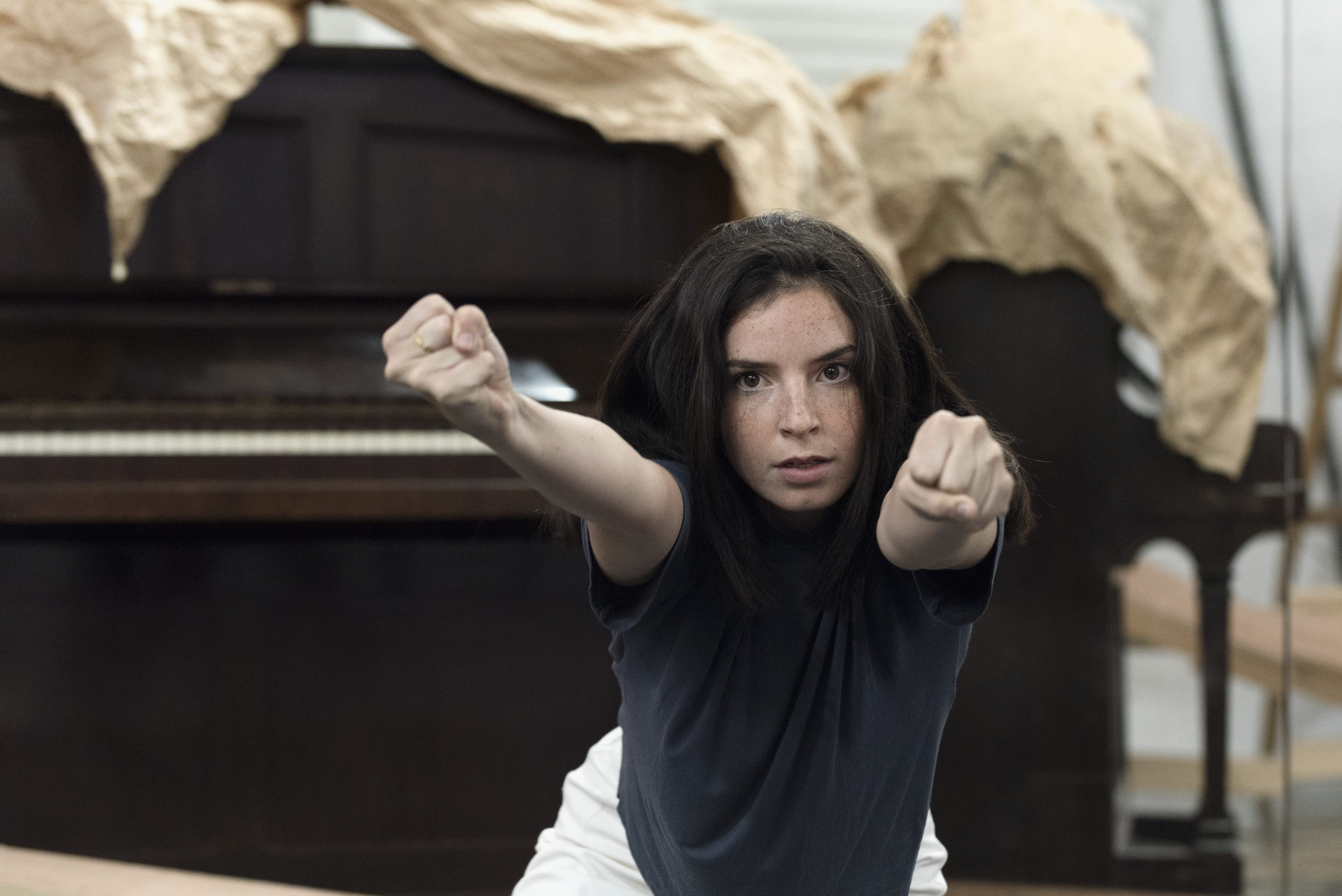
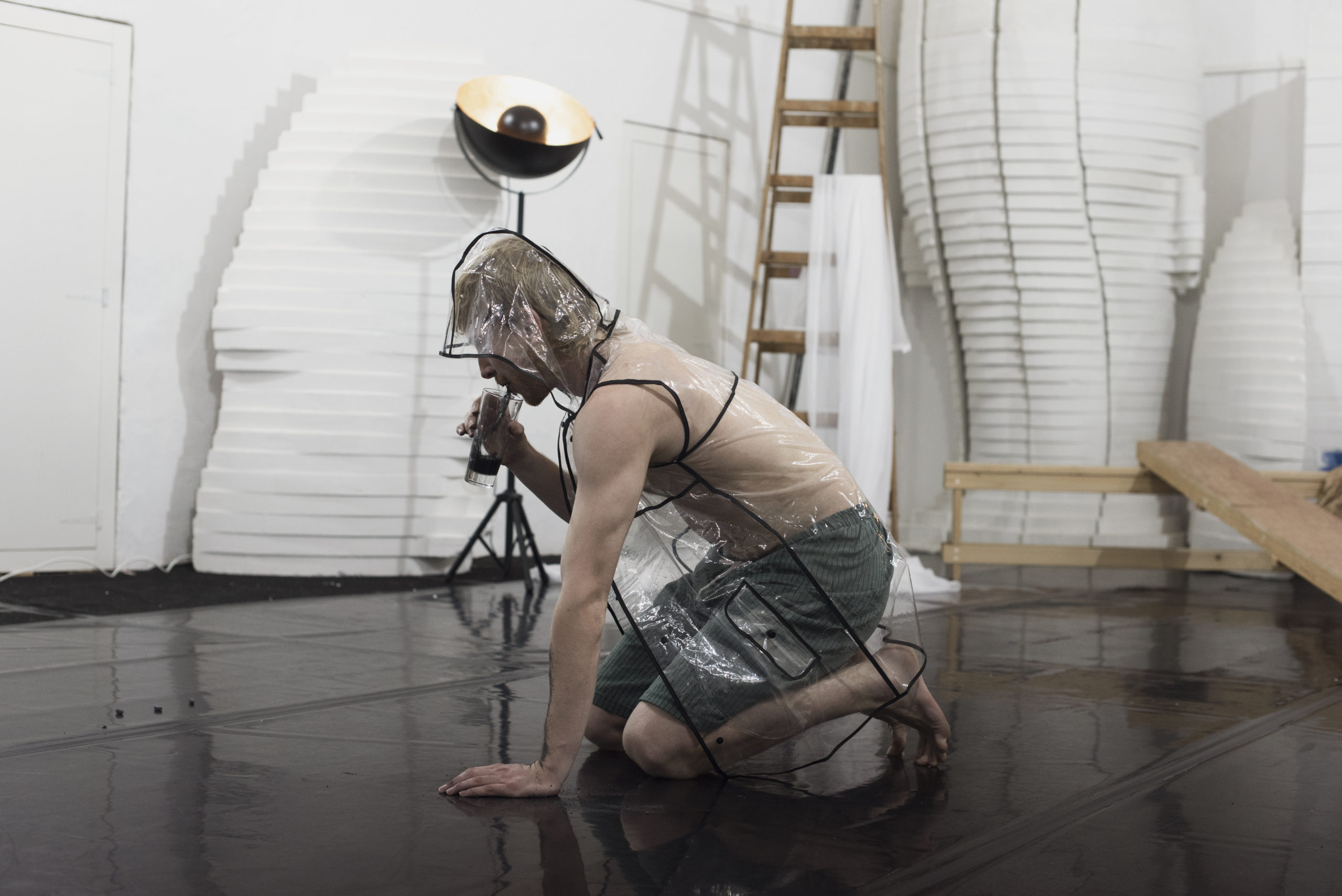
Charlene Galea
‘Capsule’
Dancer: Felix Deepen

Charlene Galea is a multidisciplinary artist navigating the online and offline worlds. She often uses her own body as a tool, and an act of resistance, through live performance and photography with a focus on the political and on the spaces in which we exist. Previous exhibitions have explored issues around social media, female sexuality, rave culture, mental health, vaccines, and even agriculture. Charlene holds a bachelor’s degree in Creative Directions for Fashion, and a Master of Digital Fine Arts. She is currently travelling and collaborating in performance workshops at the Tic Tac Centre and Impulstanz to further develop her practice in movement and storytelling.
What is the story behind ‘Capsule?’
Capsule is moment to stop and think about how we consume food – its shape, texture, colour, the senses activated by eating, social aspects, and human relation –and to question its origin. The story is the life of one dancer (but also that of many) where food is replaced by capsules and the human becomes distanced from the land that grew it. The body in the story is completely lost, and one day decides to disobey the instructions for consuming the capsules given to him each day. This leads him on a search to make the land real again. Capsule is inspired by my own experience working on agricultural land with my father and the questions it raised about climate change, who will work the land in the future, if it will still exist, and whether humans care about nature and the nurture it provides.
The topic of the performance is a very relevant one. How do you manage to capture its essence through the choreography?
I wonder whether what we know of dance and movement will be relevant in 100 years. Throughout this process I have been interested in the ‘performance’ of everyday life such as waking up, stretching, and eating, as well the idea of rituals or journeys as a means to escape the everyday and engage more with our inner selves. The choreography changes from the dancer first responding to a set of instructions to the second part where he breaks the rules and creates his own game. In the final chapter the dancer is between stages of ecstasy as if discovering the land for the firsttime, and realizing it is fake and he has no idea how to look after it. The choreography is always collaborative with Felix, and evocative of real-life situationsaround addictive behaviour, waste and indifference, and the rituals around sourcing, preparing, and sharing food. The capsules choreography is playful and brings humour to the piece.
Romeo Roxman Gatt
‘Run by Hyenas’
Dancer: Keith Micallef

Romeo Roxman Gatt is a multidisciplinary artist who explores sexuality, identity, gender, love and consumption within his practice. For a while now, the artist has been working with themes of humanising and interacting with consumer objects, making the inanimate iconic and fetishised. He is also interested in documenting and archiving trans and queer experiences and has recently launched a new project called Rosa Kwir. This project revolves around alternative notions of masculinity, bringing together stories of Maltese trans men, non-binary & masculine of centre people. He is also co-founder of the first queer focused project space and contemporary art gallery in Malta. Romeo has an MA in Visual Communication from the Royal College of Art and was selected for Bloomberg New Contemporaries, ICA, London, and Bluecoat Liverpool (2016).
Tell us about the story of Run by Hyenas. Why Hyenas?
Run by Hyenas is trying to unpack and eventually become free from patriarchal masculinity.
Hyenas for a couple of reasons:
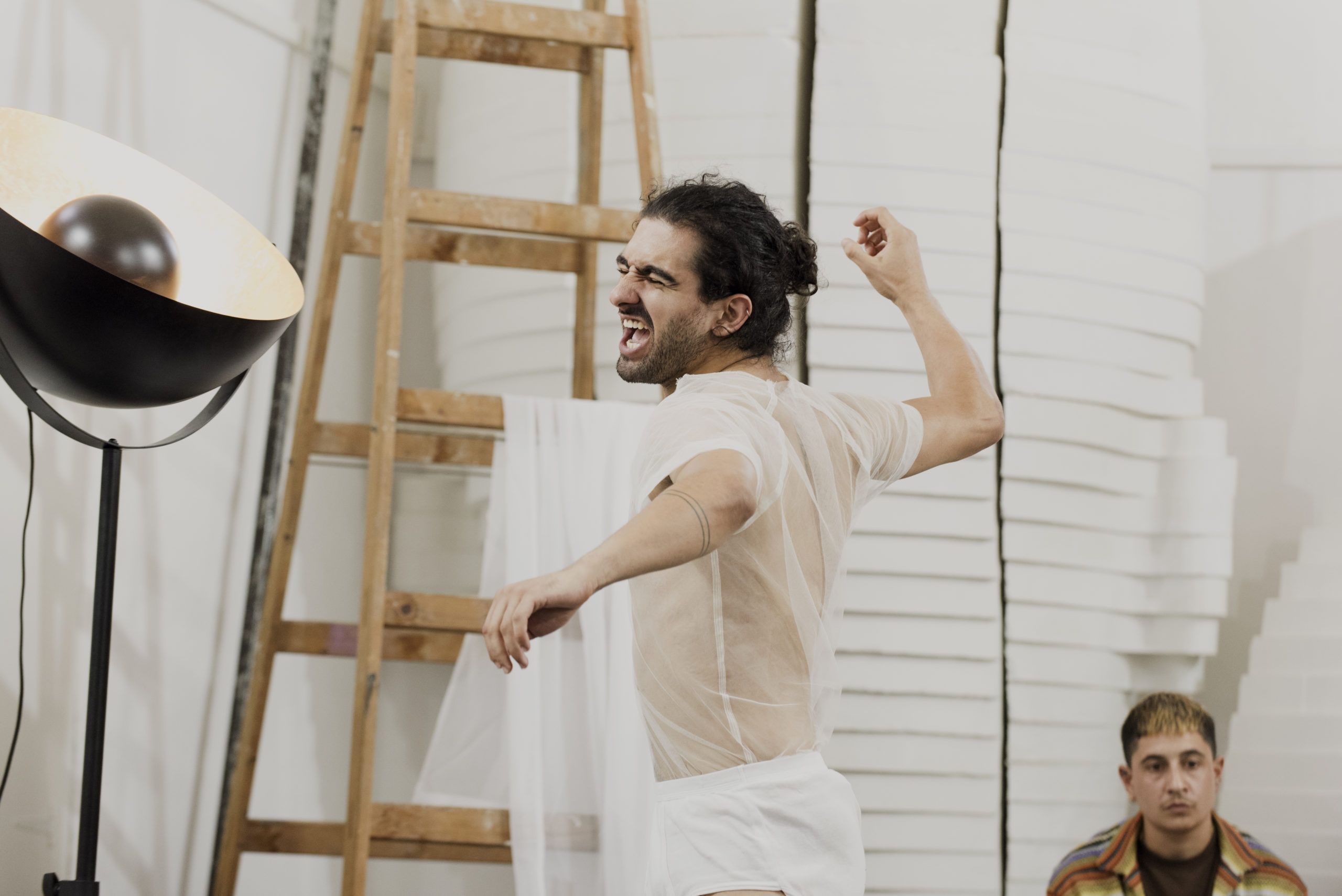
How do you tackle this significant and complex topic through dance?
There is the ongoing research on masculinities, which feeds into our sessions… through discussing, unpacking, questioning, and queering, we are trotting / crawling / running / falling / towards something, let’s say, more hopeful and joyful.
Simon Riccardi-Zani
‘Ones’
Dancers: Amber Van Veen & Lotte La Haye

Simon Riccardi-Zani was born in 1998 in Nice, France. He started classical dance aged eight and furthered his studies with programmes at Rosella-Hightower Dance School (Cannes), Princess Grace Academy (Monaco), and Lyon National Conservatoire. Simon began professional classical training at the Opera Ballet School of Paris and later trained in contemporary dance at the Paris National Conservatoire (CNSMDP). He has danced repertoire including Kurt Jooss, Olivier Dubois, Rainer Behr and Pina Baush. Workshops have included Anne Teresa De Keersmakerprocesses, Gaga techniques, and repertoire by Akram Khan, Angelin Preljocaj, and William Forsythe. Simon joined ŻfinMalta in 2019.
Describe your creative process?
It’s a very intimate work. I tried to keep the process as open as possible, giving the dancers a playground to explore and dive into their memories. I use elements of their nostalgic memories together with my own to build a story. I set a series of tasks which are all consequential to each other. We played with the notion of ageing bodies, of long waits, of how to fill the wait, fill the wait creating forms, reinserting meaning inside the forms, removing the form to just keep the meaning, and developing the meaning into a feeling.
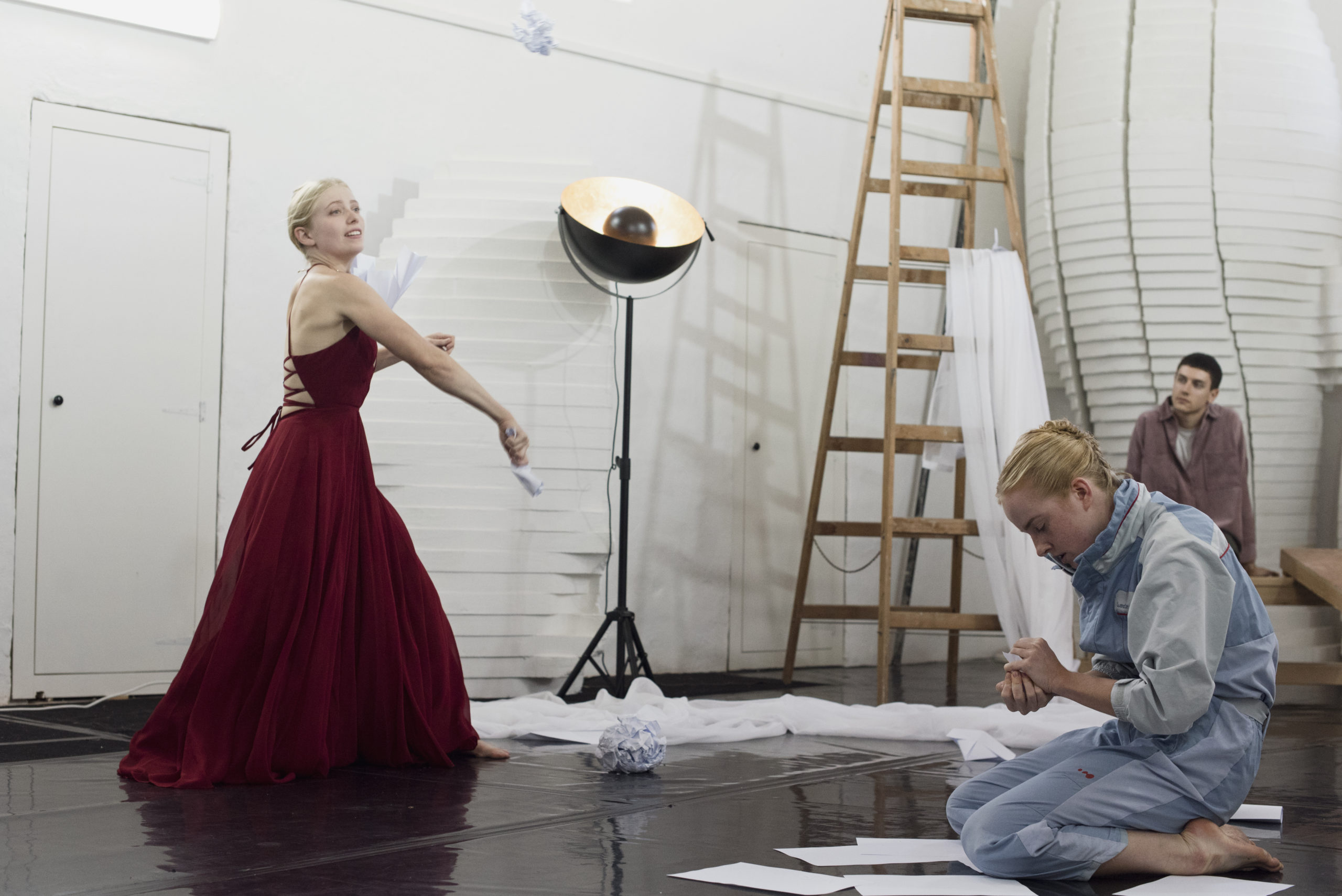
What is ‘Ones’ about?
Ones is about our individuality, and how it can be nurtured to sustain meaning in our future behaviour, actions, and interactions. I’m conceiving the future as an empty sky, or a blank ceiling, such as what we might have known as a kid in our bedroom; a ceiling that needs elements added, as sources of aspiration/inspiration. To complement our memories and find meaning in our projected existence, we must dig deep and find those elements we want to keep with us. We all have memories of the past and share feelings of nostalgia, this is the meeting point of the piece.
Emma Walker
Dancers: Lidia Caricasole & Jérémie Lafon
‘In Pursuit of Poles and Emperors’

Emma Louise Walker graduated with a First-Class Honours degree in Dance and Performance from the Central School of Ballet in London, having first choreographed in 2013 in a collaboration with Central Saint Martins. Emma toured the UK with DeNada Dance Theatre’s production ‘Toro,’ by Carlos Pons Guerra, and was then a professional dancer with ŻfinMalta National Dance Company until 2021, working with choreographers including Paolo Mangiola, Jacopo Godani and Rosemary Lee. In her current role with ŻfinMalta she co-ordinates education and outreach opportunities and creates educational resources for the company as well as for audiences who want to learn more about contemporary dance.
Why this title? What is the story behind the work?
‘In Pursuit of Poles and Emperors’ is inspired by Apsley Cherry Garrard’s memoir of Scott’s tragic expedition to the Antarctic, in which he compares his own motivations of scientific data and penguin embryo collection, to Scott’s motivation to reach the South Pole. There is a cruel irony in the fate of both pursuits: Cherry Garrard’s Penguin eggs deemed useless upon his return, and Scott reaching the Pole to find a Norwegian flag already flying, dying on his return days later. These incentives for discovery are painted as opposing, one viewed as a noble pursuit for knowledge, and another a futile attempt for notoriety and claim, but in reality they are both travelling in the same direction: both a catalyst for progress and pushing the limits of human discovery.
“There are many reasons which send men to the poles, and the intellectual force uses them all. But the desire for knowledge for its own sake is the only one which really counts, and there is no field for the collection of knowledge which at the present can be compared to the Antarctic.”
The work explores the vast unknown and how seemingly limitless it is, Can you tell us more about this?
The future, or what the world may look like in 100 years is simultaneously predictable and completely unknowable, and the only indicator or ‘predictor’ we have is the past. History often presents circular patterns of human thought and behaviour, but only a few things appear to increase exponentially with time, including exploration/discovery, and the possibilities and potential of technology; perhaps not necessarily the rate of exploration, but the depths of discovery which are possible, something which is inextricably linked to the development of technology and available tools. What caught my attention reading ‘The Worst Journey in the World,’ was the wonder and urgency of discovering such an abundance of new things. Cherry Garrard’s beautiful descriptive language demonstrates his awe “in all that lived and had its being on the finger of that great sterile continent.”
From the smallest plankton to fields of Killer Whales, and from the gleaming ice-cliffs of Erebus, to tremendous rows of Emperor Penguins, trumpeting with their curious metallic voices. It is rare that humans can now find such an untouched and undocumented environment on Earth, but technology is opening a new field for discovery further than our own planet. 100 years after this book was published, with the first images from the James Webb telescope, we see a new urgency for information: to seek, to document, to collect, and perhaps in another century, to visit.
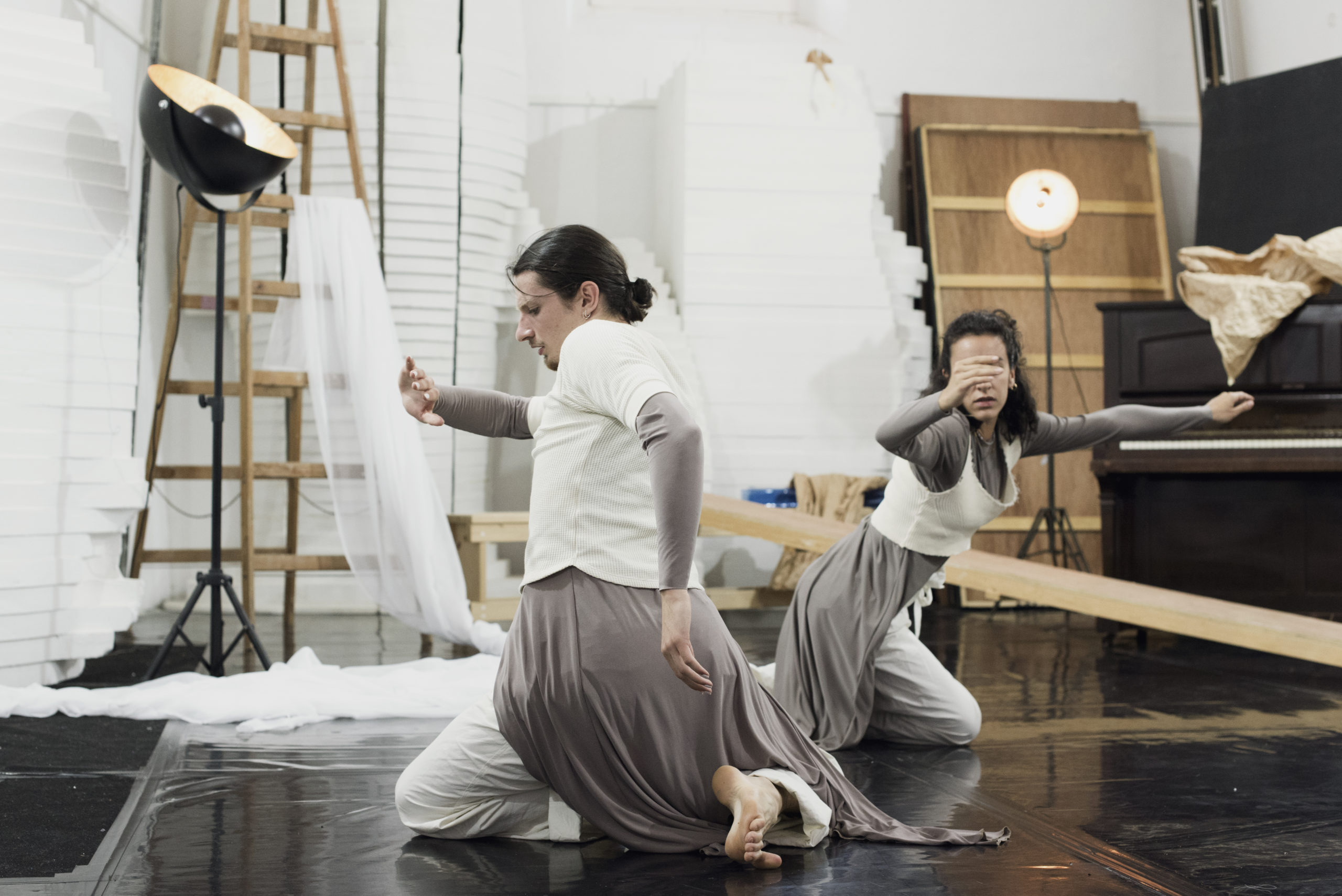
Chakib Zidi
‘Humain Sans Parole’
Dancers: Tara Dalli & Nik Folini

Chakib Zidi is a Tunisian artist based in Malta. He trained in both ballet and contemporary dance at the National Ballet of Tunisia and the TRAMONI-CAPARROS Russian Ballet School of Tunis. From 2009-2011 he was a teacher and choreographer at the National Ballet of Tunis, and in 2011 at Studios Ikaass Dance company. Chakib also worked as a dance instructor and lecturer at High Institute for Dramatic Art of Tunis and is currently a guest lecturer teaching dance in the Theatre Studies department of the University of Malta. Commissions include Koppin, Valletta European Capital of Culture 2018, ARC Allied Rainbow, and Festivals Malta, all exploring themes of migration, borders, and minorities. He is an artist and LGBTQ activist interested in creating dance focused on personal expression, collective freedom, identity, gender fluidity, borders, and commitment to healing justice.
Tell us about your work ‘Humains!’
It is a contemporary dance piece where dance and activism merge. This piece is inspired by personal experience as a gay, brown, refugee male, and by the current socio-political situation of control of marginalised communities and societies. It reflects scenarios where the dancers’ bodies become an (in) visible territory. The dancers represent the political and social heritage of today’s world, while the performance can be seen as a battleground for hope, coexistence, and a potential utopian place for everyone. The project is based on present references and realities – anti–migration Laws, anti–human rights practices, and wars, and how these marginalised communities have been fighting for liberation and have the right to exist without compromise. Humains! seeks an equal platform for democracy and liberation. It asks, will the creation of a new Nation and Identity, where wars, inequality and borders no longer exist, solve the issue of the migration crisis? Will gender equality and social justice be achieved? Will this new identity clear the remnants of past conflicts and wars? This project is an extension of my practice and my activism through a choreographic approach.
Is there a narrative in the choreography?
The choreography is a crucial mechanism whereby identities are formed and performed, making it possible for stereotyping to be reinforced and disrupted, exploring the notion of global and personal identity formation. The stories are inclusive of gendered experiences, ethnicities, and countries, and a site for truth-telling; revealing aspects of cultures and behaviours that might otherwise be taken for granted. I want to explore how dance can provide a means of social inclusion. Through both sound and movement this dance narrates complex notions of identity that contribute to socioeconomic empowerment and the currency of popular culture. The choreography is a series of questions about how we can build inclusive communities that allow individuals to represent themselves so that their voices are heard, and their bodies are visible, about how we can create an identity that celebrates all humans.
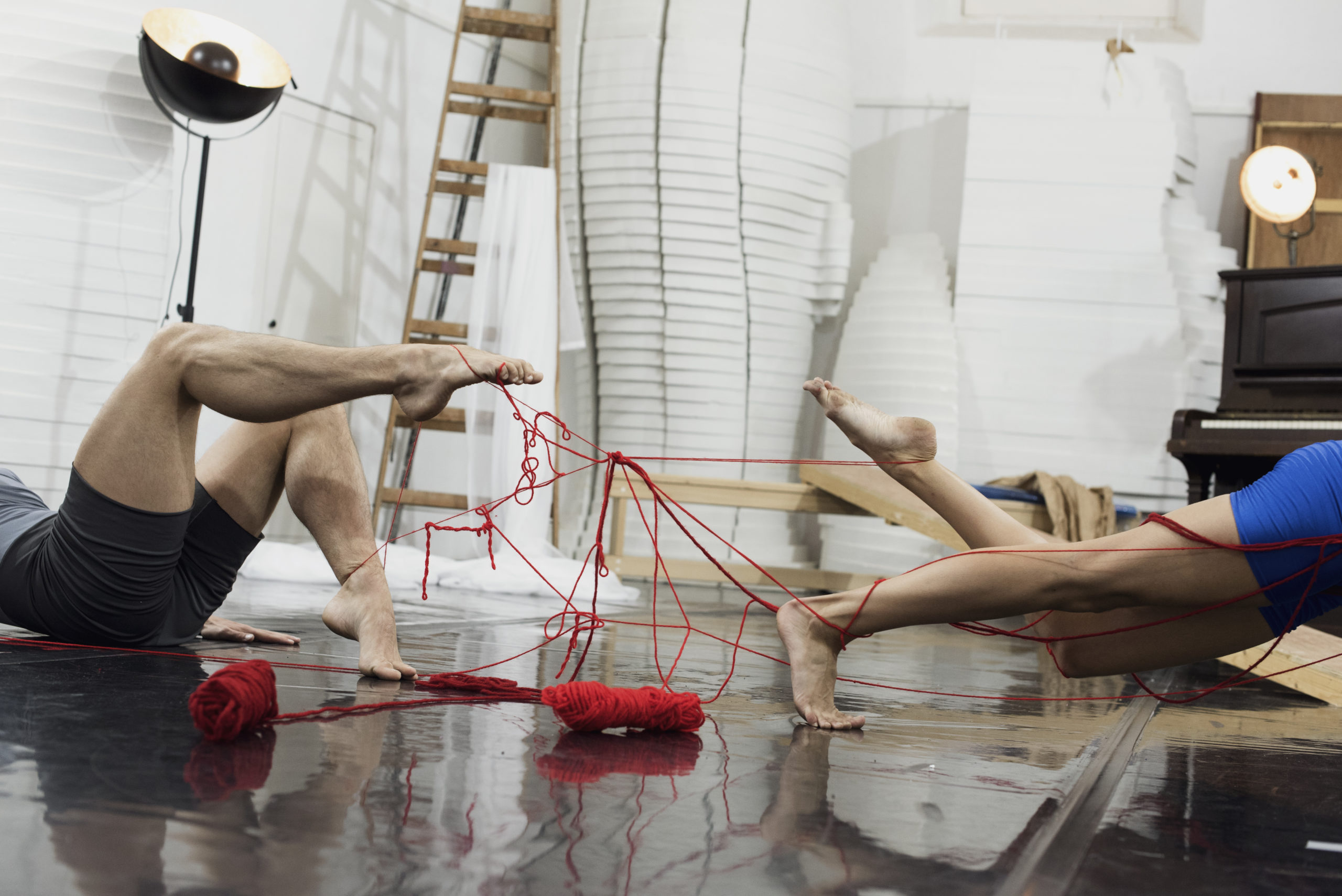
Thursday 1st December / 20:00 (Programme A)
Friday 2nd December / 20:00 (Programme B)
Saturday 3rd December / 20:00 (Programme A)
Sunday 4th December / 19:00 (Programme B)
Watch James Vernon’s trailer for ‘ŻfinMade: New Futures’
